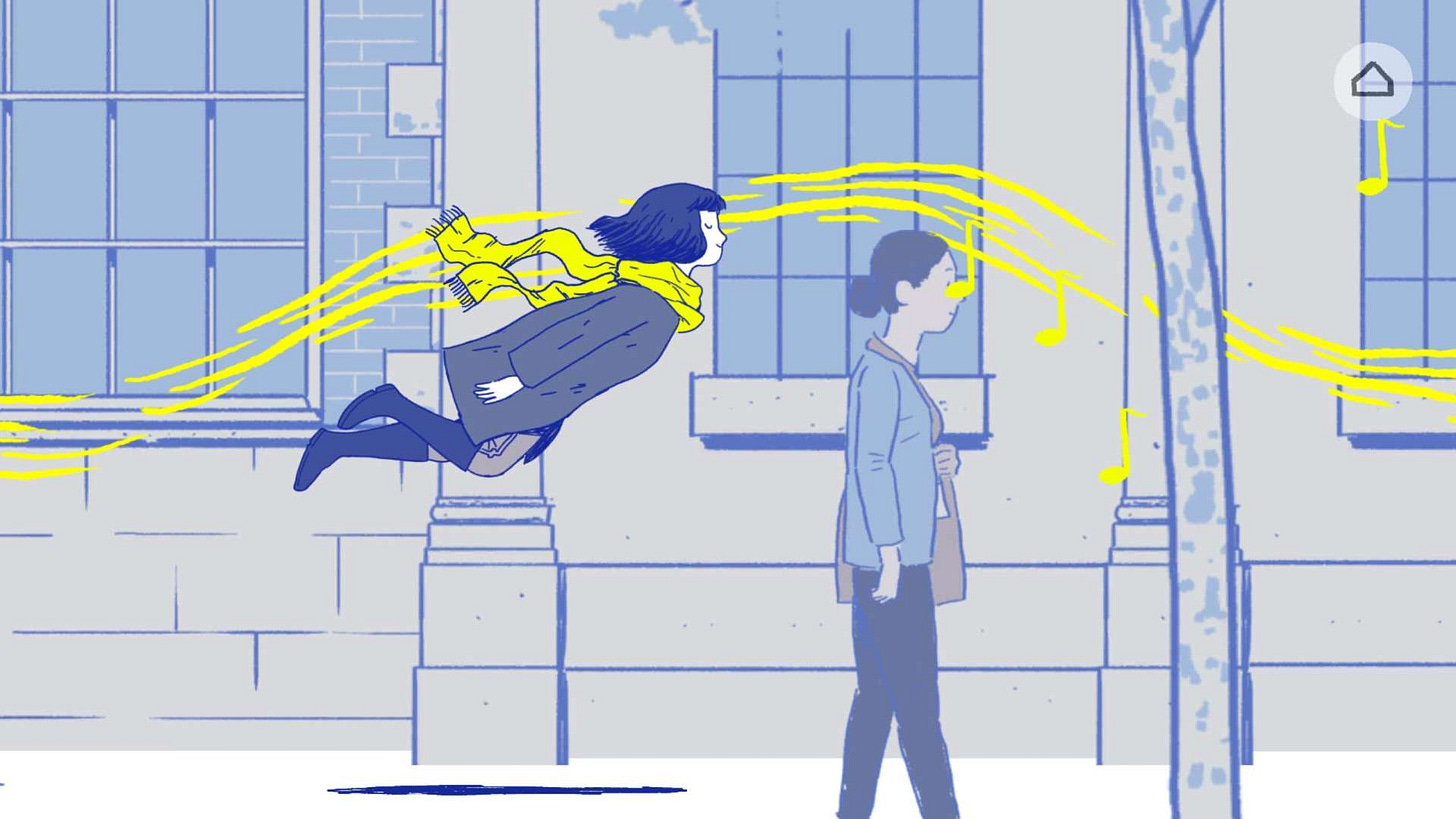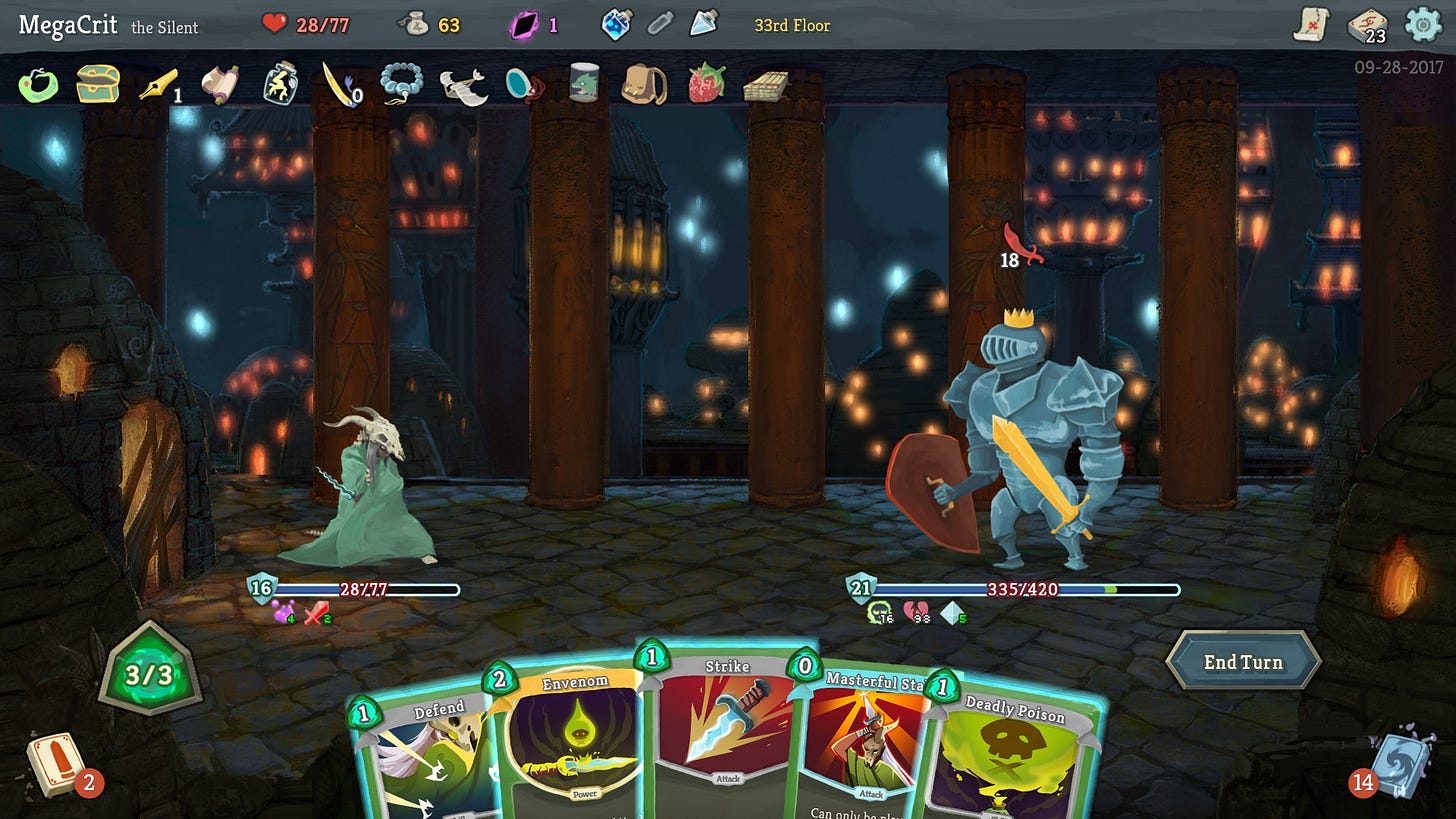How to get into video games
Recommendations for beginners old and new.
I’m Alanna, a professional writer, semi-professional crafter, and amateur programmer. As I’ve been making my own interactive projects over the past eighteen months, I’ve been thinking a lot about video games, which I’ve played and loved since I was a child; this newsletter is where I hammer out many of those ideas, and write about what I’m working on.
Because of My Whole Deal, there are two questions I’m often asked by friends, colleagues, and acquaintances: how to start knitting, and how to get into video games. A few years ago, I wrote a book to answer to that first question. The second is tougher.
There’s no real cultural analogue for video games. That’s mostly because they have a higher barrier to entry than, say, books, TV, or movies. Consoles (and PCs) are often prohibitively expensive, games themselves can run upwards of $70, and even the simplest, most mind-numbingly repetitive games need you to actually sit down and play them. It’s a different kind of buy-in than watching a show, requiring some exchange of passive viewership for choice and action. This is not what everyone wants from entertainment!
Still, the question of how to begin is frequent, largely because it’s difficult to find a place to start. The question, too, is a personal one, and there isn’t a one-size-fits-all answer. For one thing, everyone’s experience and comfort level with games is wildly variable. What could constitute intuitive gameplay to one player could prove needlessly complex to another; what’s more, different people want different experiences out of games. I love the back and forth that comes with recommending a first game, where I try to suss out what, if any, their prior relationship to gaming is (Pokémon? Magic: The Gathering? Tamagotchi? Chess?) and what they’re looking for — immersion, escape, satisfaction, amusement, to see what all the fuss is about? What about the all-important *~*~*vibes*~*~*?
While I can’t perform that interlocution with each of you individually (although honestly just message me and I probably will), over the course of the past five years or so I’ve developed what I’ve come to think of as a solid intro syllabus: a list of relatively accessible games for folks who haven’t touched them in years — or ever — and are looking for an entry point. This list doesn’t begin to even scratch the surface of the vast array of possibilities on the gaming market, and that’s on purpose. There are SO many games that it can be overwhelming for someone just looking for something to play today, right now, without a lot of fuss.
Instead, these are seven (plus one bonus) games that meet several criteria: they’re all available on smartphones (and often many other platforms); a solid proportion are free to play, and the most expensive is $9.99; they explain themselves well to beginners; and they each highlight some aspect of what makes games so engaging and special as a medium in the first place. They’re worth your money and, more importantly, they’re worth your time. Try a couple — even if you’ve never picked up a controller in your life, these should all be relatively instinctual — and see if one feels like a fit. I’d love to hear what resonated, and if you’re a seasoned gamer yourself, I’m curious to know what your recs for beginners are, too!
Florence ($2.99 on Apple and Android)
I don’t think it’s an exaggeration to say that I think about this lovely, sub-hour-long game almost every day. That’s largely owing to its plinky, orchestral soundtrack, which underpins the entire experience and which I keep in heavy rotation while I work, but also because of what the game manages to accomplish in such a small, spare space. Florence is a wordless, emotionally resonant glimpse of a relationship, executed in puzzles that feel so natural to complete you don’t even realize you’re doing so in the first place. It’s a game that’s so easy to play it almost feels like reading a great graphic novel, one that shows rather than tells from the second you pick it up, and is worth playing through in a single sitting (ideally with headphones). Practically anyone can play this, and it’s almost guaranteed to make you cry.
Image via Annapurna Interactive
Oxenfree (free on Apple and Android with a Netflix subscription)
Oxenfree has the most traditional narrative of the games on this list, and it beautifully demonstrates a the fundamental difference between games and other mediums: the importance of player choice. You play as Alex, a teenage girl who recently lost someone close to her, during a weekend getaway with friends on a mysterious island. The action of the game primarily consists of walking around, tapping on objects and talking to other people, discovering their secrets and deciding what you (as Alex) want to do next.
It has the atmosphere of a slightly more mature Stranger Things or a more-than-slightly-less cannibalistic Yellowjackets — dark, stylish updates on the teen drama mixed with mystery and a touch of horror — bolstered by a particularly clever game mechanic where you only have a limited amount of time to make each of your choices. If you choose to do nothing in a given situation, you lose the chance altogether, which the game proves deftly is in itself a choice. There’s now a sequel, also available from Netflix, that I’ve been meaning to check out too.
Image via Night School Studios
Tender: Creature Comforts ($3.99 on Apple and Android)
Tender is, in so many words, Tinder but a game. It REALLY feels like a dating app — you as the player set up a profile, swipe left or right on the dreamy, cartoony characters you can arrange dates with and, eventually, get to know better as you advance the story. Like a real dating app, Tender takes over your phone. You have to allow notifications, respond to your suitors throughout the day, and show up to dates on time (you get dinged for being late or not showing up).
It’s so realistic that the main criticism I have and hear is that it’s frustrating in the same way the apps are frustrating: you book a date with some momentum and interest, and then by the time it rolls around you’re busy or tired or just don’t feel up to it. And sometimes you think you’re doing everything right, giving a character the best possible responses, and yet they still ghost you or react badly. It could absolutely hit too close to home, but if you’re interested in seeing how a genuinely engaging story could be told in an unusual format tailor-made for a phone game, Tender delivers masterfully.
Image via Kenny Sun
Monument Valley ($3.99 on Apple and Android)
This is the only entry on this list I haven’t actually played much of myself, but it comes so highly recommended by friends (including my fiancé/editor and folks who don’t typically play games) and has become such a metonym for good mobile games that I feel comfortable including it. It features moody, dimensional puzzles that don’t take long to complete — all you need to do is tap on the screen and your character (a young, nameless girl lost in an Escher-like city) walks to that point — and plays with the intimate space of a phone or tablet screen with warmth and cleverness. Kids, apparently, love it too.
Image via Ustwo Games
Slay the Spire ($9.99 on Apple and Android)
Both this and the next game on the list are what I would describe as life-ruiners: games with such fun and satisfying central loops that you could find yourself sinking dozens (or, if we’re getting personal here, hundreds) of hours into them.
This one is from a genre of games called deck-builders, where each playthrough you cobble together a deck of virtual cards with which to battle against enemies; it’ll instantly feel natural if you’ve ever touched a deck of playing cards, even if all the icons onscreen seem a bit overwhelming at first glance. The card draws are random, so every subsequent attempt is completely different from the last, based on what you draw and how you play them. That variety contributes to the game’s irresistible just-one-more-try propulsion that could keep you up half the night. Slay the Spire is the game on this list I’m most likely to sit down and play now, years after first getting obsessed.
Image via MegaCrit
Vampire Survivors (free on Apple and Android)
In terms of pure lizard-brain fun, Vampire Survivors is probably my top pick here. It has a single input: all you do is move the player character as hordes of enemies approach you. You find randomly generated weapons as the game goes on and the hordes grow larger, automatically firing whatever you’ve chosen to equip in order to fend them off. The longer you survive, the more upgrades you’re able to add to your offenses and defenses, and the more waves of enemies spawn in kind.
It’s insanely addictive, although in a different way than Slay the Spire; while that game makes you feel like a nimble-minded strategic genius when you lock into its logic, Vampire Survivors makes you feel like a Hulk-smash-style badass, mowing through crowds of enemies so thick you can’t even tell what’s happening onscreen. As a bonus for more squeamish folks (of which I am avowedly one), the graphics are all low-res and kitschy enough that it never feels violent or gross.
Image via Poncle / Nintendo
Sayonara Wild Hearts (available for free with an Apple Arcade subscription)
Second only to Florence on this list with regard to banger soundtracks, this arcade-style game nicely straddles the story-vs-gameplay line; it doesn’t have the most explicit central plot, but there’s a subtle narrative tug that makes the whole thing feel urgent and cohesive and, above all, stylish as hell. It’s a fast-paced race through psychedelic environments on a flying motorcycle, all the while racking up points and avoiding enemies. It’s honestly fairly difficult, especially at first, but the gameplay so simple (think: Dance Dance Revolution, for your fingers) and the music is so propulsive that it always feel satisfying. As you watch yourself get better and better, you start to realize that “winning” isn’t really the central goal in the first place.
Image via Simogo
Honorable mention: Stardew Valley ($4.99 on Apple and Android)
I debated including this because it’s just a lot more GAME than the others here, and because there are definitely better platforms to play it on than mobile (I’d personally recommend using a laptop or Switch, if you happen to have access). I’m doing so because while I don’t think it’s the perfect first game for most people, Stardew Valley is absolutely the perfect first game for a certain type of person. If you were really into The Sims or Roller Coaster Tycoon or any sort of simulation game as a kid, and/or enjoy building and maintaining systems, and/or aren’t particularly interested in battling or really even much conflict, that person could well be you.
Stardew Valley is a farming simulator, where you plant and harvest crops, tend to animals, make friends (and lovers!!!!!!!) with local townspeople, and generally just…live. There are layers of mechanics you can choose to engage with or not (including an optional area where you can in fact battle enemies), and the overall atmosphere is cozy, calming, and a touch melancholy; if you’re a fan of Studio Ghibli’s films, this game has some thematic resonance. Never have chores been more fun.
Image via ConcernedApe









I've had Florence downloaded forever and still haven't played. This is a good reminder to check it out and check back in. I've played all the others and your descriptions (for what they are; for who they are for) are spot on. I've played so much Slay the Spire that (a la Inside Out) it's one of my emotional islands now. I'm curious whether you considered adding Journey to the list. It seems to be the one that got most of my art friends (friends who are art people?) into video games.